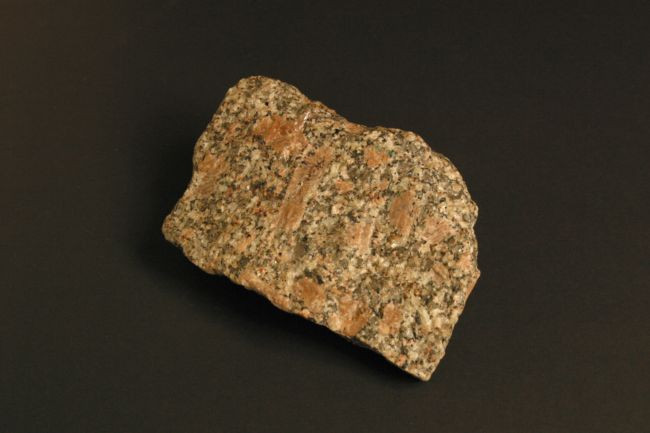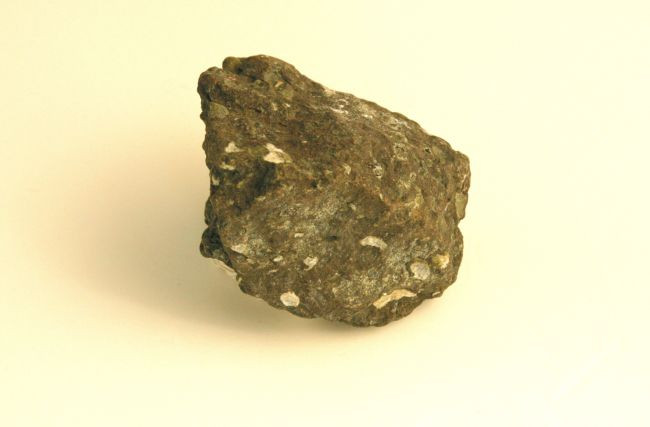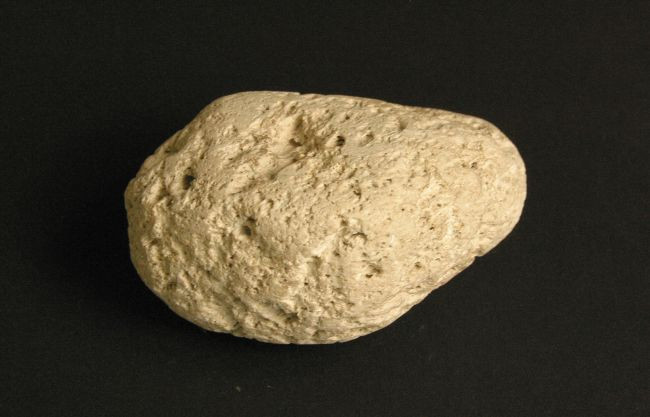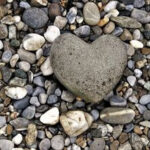Igneous rock examples are abundant and fascinating, showcasing Earth’s powerful geological processes; visit rockscapes.net for inspiration. These rocks, born from cooled magma or lava, boast diverse compositions and textures, making them ideal for various landscaping and construction applications. Explore different types of igneous rocks for your landscape design and discover their unique features and benefits on rockscapes.net.
1. Unveiling Igneous Rocks: Formation and Characteristics
What exactly are igneous rocks, and how do they come into existence? Igneous rocks, also known as magmatic rocks, are formed through the cooling and solidification of magma or lava. Magma is molten rock found beneath the Earth’s surface, while lava is magma that has erupted onto the surface.
1.1. Intrusive vs. Extrusive: Two Paths to Igneous Rock
Igneous rocks are broadly classified into two categories based on their mode of formation: intrusive and extrusive.
- Intrusive Igneous Rocks: These rocks, also known as plutonic rocks, are formed when magma cools slowly beneath the Earth’s surface. The slow cooling process allows for the formation of large, well-defined crystals, giving intrusive rocks a coarse-grained texture. Granite is a prime example of an intrusive igneous rock.
- Extrusive Igneous Rocks: Also known as volcanic rocks, these are formed when lava cools rapidly on the Earth’s surface. The rapid cooling process results in small, often microscopic crystals, giving extrusive rocks a fine-grained or glassy texture. Basalt and pumice are common examples of extrusive igneous rocks.
1.2. Composition Matters: Classifying Igneous Rocks by Chemistry
The chemical composition of magma or lava plays a crucial role in determining the type of igneous rock formed. Igneous rocks are often classified based on their silica content, with rocks being categorized as felsic, intermediate, mafic, or ultramafic.
- Felsic Rocks: These rocks are high in silica (over 63% SiO2) and typically light in color. They are rich in minerals like quartz and feldspar. Granite and rhyolite are examples of felsic igneous rocks.
- Intermediate Rocks: These rocks have a silica content between 52% and 63% SiO2 and have a composition between felsic and mafic rocks. Diorite and andesite are examples of intermediate igneous rocks.
- Mafic Rocks: These rocks are low in silica (between 45% and 52% SiO2) and typically dark in color. They are rich in magnesium and iron. Basalt and gabbro are examples of mafic igneous rocks.
- Ultramafic Rocks: These rocks contain less than 45% SiO2 and are composed primarily of minerals like olivine and pyroxene. They are very dark in color. Peridotite is an example of an ultramafic igneous rock.
2. Granite: The Durable and Elegant Choice
What makes granite a popular choice for construction and landscaping? Granite, a coarse-grained intrusive igneous rock, is renowned for its durability, strength, and aesthetic appeal. Its composition typically includes quartz, feldspar, and mica, giving it a distinctive speckled appearance.
2.1. Applications of Granite: From Countertops to Curbstones
Granite’s exceptional properties make it suitable for a wide range of applications:
- Construction: Granite is a popular choice for building façades, flooring, and paving due to its resistance to weathering and abrasion.
- Countertops: Granite countertops are highly valued for their durability, heat resistance, and stain resistance.
- Landscaping: Granite is used in landscaping for creating retaining walls, steps, pathways, and decorative features.
- Monuments and Gravestones: Granite’s resistance to weathering makes it an ideal material for monuments and gravestones.
2.2. Granite Varieties: A Spectrum of Colors and Textures
Granite comes in a wide variety of colors and textures, depending on its mineral composition and origin. Some popular granite varieties include:
- White Granite: Features a predominantly white background with speckles of black and gray.
- Black Granite: A dark-colored granite with minimal visible grains.
- Pink Granite: Contains a significant amount of potassium feldspar, giving it a pink hue.
- Red Granite: Rich in iron oxide, resulting in a reddish color.
 A sample of granite showing its black, white and grey crystal structure
A sample of granite showing its black, white and grey crystal structure
Granite’s hardness and resistance to weathering make it ideal for kitchen countertops and building fronts.
3. Basalt: The Dark and Versatile Rock
What are the unique characteristics and uses of basalt? Basalt, a fine-grained extrusive igneous rock, is one of the most abundant rocks on Earth’s surface. It is typically dark in color due to its high content of mafic minerals like pyroxene and olivine.
3.1. Basalt Formations: From Oceanic Crust to Columnar Joints
Basalt is a major component of the oceanic crust and is also found in continental flood basalts, which are vast volcanic eruptions that cover large areas of land. When basaltic lava cools, it can form distinctive columnar joints, such as those seen at the Giant’s Causeway in Northern Ireland.
3.2. Basalt Applications: Construction, Landscaping, and More
Basalt’s versatility makes it suitable for various applications:
- Construction: Basalt is used as an aggregate in concrete, asphalt, and road construction. It is also used for building blocks and paving stones.
- Landscaping: Basalt is used in landscaping for creating rock gardens, water features, and pathways.
- Sculpture: Basalt’s dark color and fine grain make it a suitable material for sculptures.
- Soil Amendment: Crushed basalt can be used as a soil amendment to improve drainage and nutrient content.
3.3. Basalt Varieties: Exploring Different Textures and Compositions
Basalt can exhibit variations in texture and composition, leading to different varieties:
- Vesicular Basalt: Contains numerous gas bubbles, giving it a porous texture.
- Columnar Basalt: Characterized by its distinctive columnar joints.
- Pillow Basalt: Forms when lava erupts underwater and cools rapidly, creating pillow-shaped structures.
 a dark, fine-grained rock
a dark, fine-grained rock
Basalt is a common rock found in oceanic crust and is used as an ingredient in concrete.
4. Pumice: The Lightweight Wonder
What makes pumice so unique and useful? Pumice, a light-colored, highly vesicular extrusive igneous rock, is known for its extremely low density. It forms during explosive volcanic eruptions when gas-rich lava is ejected into the air and cools rapidly.
4.1. Pumice Formation: A Frothy Volcanic Creation
The rapid cooling and decompression of gas-rich lava create numerous vesicles (gas bubbles) in pumice, giving it its characteristic porous texture and low density. In fact, pumice is so light that it can often float on water.
4.2. Pumice Applications: From Exfoliation to Construction
Pumice’s unique properties make it suitable for a variety of applications:
- Personal Care: Pumice stones are used to exfoliate dead skin from the feet and other parts of the body.
- Cleaning: Pumice is used in abrasive cleaning products for removing stains and grime.
- Horticulture: Pumice is used as a soil amendment to improve drainage and aeration.
- Construction: Pumice is used as an ingredient in lightweight concrete and other construction materials.
4.3. Pumice Varieties: Exploring Different Colors and Textures
Pumice can vary in color and texture depending on its composition and the conditions under which it formed:
- White Pumice: The most common type of pumice, typically light in color.
- Gray Pumice: Contains a higher proportion of dark minerals.
- Pumicite: Fine-grained pumice ash, used as an abrasive and pozzolanic material.
 A light coloured stone that is also extremely light in weight. Surface shows where bubbles of gas have escaped
A light coloured stone that is also extremely light in weight. Surface shows where bubbles of gas have escaped
The bubbles that are created in volcanic eruptions, when gases are violently released from the molten rock, creates pumice. Pumice is used to remove dead skin and as an ingredient in construction materials.
5. Obsidian: The Volcanic Glass
What is obsidian, and why is it so highly valued? Obsidian, a naturally occurring volcanic glass, is formed when felsic lava cools rapidly with minimal crystal growth. It is typically black in color and has a smooth, glassy texture.
5.1. Obsidian Formation: Rapid Cooling and Vitrification
The rapid cooling of lava prevents the formation of crystals, resulting in a glassy, amorphous structure. Obsidian is often found near volcanic vents and lava flows.
5.2. Obsidian Applications: From Tools to Art
Obsidian has been used by humans for thousands of years for a variety of purposes:
- Tools and Weapons: Obsidian’s sharp edges made it ideal for creating knives, arrowheads, and other tools.
- Surgical Instruments: Obsidian blades are still used today in some surgical procedures due to their sharpness.
- Art and Decoration: Obsidian is used in jewelry, sculptures, and other decorative objects.
5.3. Obsidian Varieties: Exploring Different Colors and Patterns
Obsidian can exhibit a variety of colors and patterns due to the presence of impurities:
- Black Obsidian: The most common type of obsidian.
- Snowflake Obsidian: Contains white or gray cristobalite inclusions, creating a snowflake-like pattern.
- Rainbow Obsidian: Exhibits iridescent colors due to thin film interference.
6. Rhyolite: Granite’s Extrusive Cousin
What are the characteristics and uses of rhyolite? Rhyolite, an extrusive igneous rock, is the volcanic equivalent of granite. It has a similar chemical composition to granite but a much finer grain size due to its rapid cooling on the Earth’s surface.
6.1. Rhyolite Formation: A Volcanic Counterpart to Granite
Rhyolite forms during explosive volcanic eruptions when silica-rich lava is ejected into the air and cools rapidly. It is often found in volcanic domes and lava flows.
6.2. Rhyolite Applications: Construction, Landscaping, and More
Rhyolite’s properties make it suitable for various applications:
- Construction: Rhyolite is used as an aggregate in concrete and road construction.
- Landscaping: Rhyolite is used in landscaping for creating rock gardens, pathways, and decorative features.
- Ceramics: Rhyolite is used as a flux in the production of ceramics.
6.3. Rhyolite Varieties: Exploring Different Textures and Compositions
Rhyolite can exhibit variations in texture and composition, leading to different varieties:
- Porphyritic Rhyolite: Contains large crystals (phenocrysts) embedded in a fine-grained matrix.
- Obsidian Rhyolite: Contains glassy areas similar to obsidian.
- Welded Tuff: A type of rhyolite formed from volcanic ash that has been compacted and fused together.
7. Diorite: The Intermediate Choice
What makes diorite a distinctive and useful rock? Diorite, an intrusive igneous rock, has a composition intermediate between granite and gabbro. It is typically gray or dark gray in color and has a medium- to coarse-grained texture.
7.1. Diorite Formation: An Intermediate Plutonic Rock
Diorite forms when magma with an intermediate silica content cools slowly beneath the Earth’s surface. It is often found in association with granite and other intrusive rocks.
7.2. Diorite Applications: Construction, Sculpture, and More
Diorite’s properties make it suitable for various applications:
- Construction: Diorite is used as a building stone, paving stone, and aggregate in concrete.
- Sculpture: Diorite’s hardness and durability make it a suitable material for sculptures.
- Monuments: Diorite has been used for monuments and statues throughout history.
7.3. Diorite Varieties: Exploring Different Textures and Compositions
Diorite can exhibit variations in texture and composition, leading to different varieties:
- Quartz Diorite: Contains a significant amount of quartz.
- Gabbroic Diorite: Contains a higher proportion of mafic minerals.
- Porphyritic Diorite: Contains large crystals (phenocrysts) embedded in a medium-grained matrix.
8. Gabbro: The Mafic Intrusion
What are the characteristics and uses of gabbro? Gabbro, an intrusive igneous rock, is the plutonic equivalent of basalt. It is typically dark in color and has a medium- to coarse-grained texture.
8.1. Gabbro Formation: A Mafic Plutonic Rock
Gabbro forms when mafic magma cools slowly beneath the Earth’s surface. It is a major component of the oceanic crust and is also found in continental intrusions.
8.2. Gabbro Applications: Construction, Landscaping, and More
Gabbro’s properties make it suitable for various applications:
- Construction: Gabbro is used as an aggregate in concrete and road construction.
- Landscaping: Gabbro is used in landscaping for creating rock gardens, pathways, and decorative features.
- Dimension Stone: Gabbro is used as a dimension stone for building façades and monuments.
8.3. Gabbro Varieties: Exploring Different Textures and Compositions
Gabbro can exhibit variations in texture and composition, leading to different varieties:
- Norite: A type of gabbro that contains orthopyroxene as the dominant pyroxene mineral.
- Anorthosite: A type of gabbro that is composed almost entirely of plagioclase feldspar.
- Troctolite: A type of gabbro that contains olivine and plagioclase feldspar.
9. Andesite: The Volcanic Intermediate
What are the unique properties and applications of andesite? Andesite, an extrusive igneous rock, is the volcanic equivalent of diorite. It has a composition intermediate between basalt and rhyolite and is typically gray or reddish-gray in color.
9.1. Andesite Formation: A Volcanic Intermediate Rock
Andesite forms during volcanic eruptions when magma with an intermediate silica content cools rapidly on the Earth’s surface. It is commonly found in volcanic arcs associated with subduction zones.
9.2. Andesite Applications: Construction, Landscaping, and More
Andesite’s properties make it suitable for various applications:
- Construction: Andesite is used as an aggregate in concrete and road construction.
- Landscaping: Andesite is used in landscaping for creating rock gardens, pathways, and decorative features.
- Dimension Stone: Andesite is used as a dimension stone for building façades and monuments.
9.3. Andesite Varieties: Exploring Different Textures and Compositions
Andesite can exhibit variations in texture and composition, leading to different varieties:
- Porphyritic Andesite: Contains large crystals (phenocrysts) embedded in a fine-grained matrix.
- Vesicular Andesite: Contains numerous gas bubbles, giving it a porous texture.
- Amygdaloidal Andesite: Contains cavities filled with secondary minerals.
10. Tuff: The Consolidated Volcanic Ash
What is tuff, and how is it formed? Tuff, a type of volcanic rock, is formed from the consolidation of volcanic ash and other pyroclastic materials. It can vary in composition, texture, and color depending on the source of the volcanic material.
10.1. Tuff Formation: Consolidation of Volcanic Debris
Tuff forms when volcanic ash, pumice fragments, and other pyroclastic materials are deposited and compacted over time. The process of consolidation can involve cementation by minerals dissolved in groundwater.
10.2. Tuff Applications: Construction, Landscaping, and More
Tuff’s properties make it suitable for various applications:
- Construction: Tuff has been used as a building stone for centuries due to its light weight and ease of carving.
- Landscaping: Tuff is used in landscaping for creating rock gardens, retaining walls, and decorative features.
- Pozzolanic Material: Some types of tuff have pozzolanic properties, meaning they can react with calcium hydroxide to form cementitious compounds.
10.3. Tuff Varieties: Exploring Different Textures and Compositions
Tuff can exhibit a wide range of textures and compositions, leading to different varieties:
- Welded Tuff: A type of tuff that has been compacted and fused together by the heat of volcanic eruptions.
- Lapilli Tuff: A type of tuff that contains lapilli-sized fragments (2 to 64 mm in diameter).
- Ash Tuff: A type of tuff that is composed primarily of volcanic ash.
11. Choosing the Right Igneous Rock for Your Project
How do you select the perfect igneous rock for your landscaping or construction needs? The choice of igneous rock depends on various factors, including:
- Desired Aesthetic: Consider the color, texture, and overall appearance of the rock.
- Durability Requirements: Choose a rock that can withstand the environmental conditions in your area.
- Budget: Different types of igneous rocks vary in price.
- Availability: Some types of igneous rocks may be more readily available than others in your region.
12. Sourcing Igneous Rocks in the USA
Where can you find high-quality igneous rocks in the United States? The USA is rich in diverse geological formations, offering a wide range of igneous rock sources.
- Granite: Quarries in states like Vermont, Georgia, and South Dakota are known for producing high-quality granite.
- Basalt: Basalt is abundant in the Pacific Northwest, particularly in states like Oregon and Washington.
- Pumice: Pumice deposits are found in states like Oregon, California, and New Mexico.
- Obsidian: Obsidian is found in volcanic regions of the western USA, including Oregon, California, and Nevada.
13. The Enduring Appeal of Igneous Rocks in Landscaping
Why are igneous rocks a timeless choice for landscape design? Igneous rocks offer a unique combination of beauty, durability, and natural appeal that makes them ideal for landscaping. Their diverse colors, textures, and formations can add character and interest to any outdoor space. Whether you’re creating a rock garden, building a retaining wall, or simply adding decorative accents, igneous rocks can enhance the beauty and value of your property.
14. Igneous Rock Maintenance and Care
How do you keep your igneous rock features looking their best? Proper maintenance and care can help preserve the beauty and longevity of your igneous rock features.
- Cleaning: Regularly clean your igneous rock features with water and a mild detergent to remove dirt and grime.
- Sealing: Consider sealing porous igneous rocks to prevent staining and water damage.
- Repair: Repair any cracks or damage promptly to prevent further deterioration.
15. Rockscapes.net: Your Partner in Igneous Rock Solutions
Looking for inspiration and expert guidance on using igneous rocks in your landscaping projects? At rockscapes.net, we offer a wealth of information, ideas, and resources to help you create stunning outdoor spaces with these magnificent natural materials. Explore our gallery of landscape designs, learn about different types of igneous rocks, and get expert advice on installation and maintenance. Let rockscapes.net be your trusted partner in bringing your igneous rock visions to life. Contact us at Address: 1151 S Forest Ave, Tempe, AZ 85281, United States. Phone: +1 (480) 965-9011. Website: rockscapes.net.
FAQ: Frequently Asked Questions About Igneous Rocks
1. What is the difference between intrusive and extrusive igneous rocks?
Intrusive igneous rocks cool slowly beneath the Earth’s surface, resulting in large crystals, while extrusive igneous rocks cool rapidly on the surface, resulting in small crystals or a glassy texture.
2. What are some common examples of igneous rocks?
Granite, basalt, pumice, obsidian, rhyolite, diorite, gabbro, and andesite are common examples of igneous rocks.
3. What is the main difference between granite and basalt?
Granite is an intrusive, felsic rock with large crystals, while basalt is an extrusive, mafic rock with small crystals.
4. How is pumice formed?
Pumice is formed during explosive volcanic eruptions when gas-rich lava cools rapidly, creating numerous vesicles (gas bubbles).
5. What is obsidian used for?
Obsidian has been used for tools, weapons, surgical instruments, and art.
6. Where can I find igneous rocks in the USA?
Igneous rocks are found in various locations throughout the USA, particularly in regions with volcanic activity or granite quarries.
7. How do I choose the right igneous rock for my landscaping project?
Consider the desired aesthetic, durability requirements, budget, and availability of different types of igneous rocks.
8. How do I maintain igneous rock features?
Clean regularly with water and mild detergent, seal porous rocks, and repair any damage promptly.
9. What are the benefits of using igneous rocks in landscaping?
Igneous rocks offer beauty, durability, natural appeal, and can add character to outdoor spaces.
10. How can rockscapes.net help me with my igneous rock project?
rockscapes.net provides information, ideas, resources, and expert advice to help you create stunning landscapes with igneous rocks.
